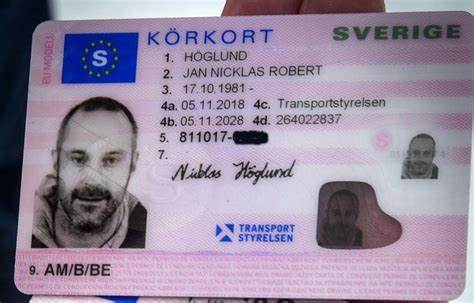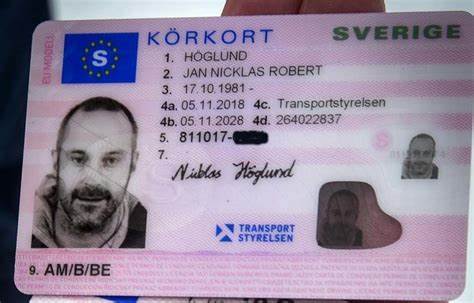5 Killer Quora Answers To Buy A1 Driving License
본문

The Comprehensive Guide to Legally Obtaining a Driving License
Driving is a basic skill for lots of, offering the flexibility to take a trip where and when you desire, often making life easier and satisfying. However, acquiring a driving license is a process that needs understanding, persistence, and adherence to legal treatments. This guide aims to offer a comprehensive overview of the actions one need to follow to legally acquire a driving license, highlighting crucial factors to consider and frequently asked concerns to ensure a smooth and problem-free experience.
Understanding the Basics
Before diving into the application process, it's crucial to comprehend the standard requirements and kinds of driving licenses offered. Driving laws vary substantially from nation to country, and even within different states or provinces within the same country. Usually, there are a number of kinds of driving licenses, including:
- Learner's Permit: This is often the initial step at the same time, allowing new drivers to gain experience under guidance.
- Provisional License: Issued after passing a basic driving test, this license normally comes with constraints and is a stepping stone to a complete license.
- Complete Driver's License: Once all the needed requirements are met, motorists can obtain a complete license, which provides total driving privileges.
- Business Driver's License (CDL): Required for those who wish to operate industrial vehicles, such as trucks or buses.
Actions to Obtain a Driving License
1. Research Local Driving Laws
The initial step in getting a driving license is to investigate the particular requirements in your location. Go to the official website of your local Department of Motor Vehicles (DMV) or comparable firm to discover detailed details about the licensing process, including age constraints, needed documents, and charges.
2. Prepare Required Documentation
Each jurisdiction has its own set of files that need to be submitted to request a driving license. Frequently needed files include:
- Proof of Identity: A passport, birth certificate, or state-issued ID.
- Proof of Residency: Utility costs, lease arrangements, or other official documents that validate your address.
- Social Security Number (if applicable): In some countries, a social security number or equivalent is needed for identification.
- Vision Test Results: Some places require a vision test before releasing a learner's authorization or license.
3. Take a Driver's Education Course
Many states and nations require new motorists to finish a driver's education course. These courses are designed to teach the rules of the roadway, traffic laws, and safe driving practices. They can be completed körkort Sverige online köpa or in a classroom setting and often consist of both theoretical and useful parts.
4. Apply for a Learner's Permit
When the needed paperwork is ready and the driver's education course is completed, the next step is to make an application for a learner's license. This typically includes visiting the DMV or submitting an application online. You will also need to pass a written test that covers traffic laws and driving knowledge.
5. Practice Driving
With a learner's permit, you can begin practicing driving under the guidance of a certified grownup. This is an important action in constructing your self-confidence and skills behind the wheel. It's likewise crucial to gain experience in numerous driving conditions, such as night driving, highway driving, and driving in severe weather.
6. Schedule and Pass the Driving Test
After gaining sufficient driving experience, you can schedule a driving test with the DMV. The test will evaluate your ability to safely operate a vehicle and follow traffic laws. You will require to bring an effectively registered and guaranteed lorry to the test, and the examiner will assess your driving skills on a fixed route.
7. Obtain a Provisional License
If you pass the driving test, you will typically get a provisional license. This license may include constraints, such as a curfew or a limit on the number of guests you can have in the lorry. These restrictions are designed to reduce the danger of mishaps and help new motorists adapt to the roadway.
8. Update to a Full License
When you have actually held a provisional license for the required duration and satisfied any additional requirements, you can upgrade to a full driver's license. This procedure normally involves a basic application and may need a retest or extra documentation.
Tips for a Successful Application
- Start Early: Begin the process as soon as you fulfill the age requirement to give yourself adequate time to prepare.
- Stay Informed: Keep up-to-date with any changes in driving laws or DMV procedures.
- Practice Regularly: Consistent practice is essential to constructing self-confidence and enhancing your driving abilities.
- Stay Calm During the Test: Anxiety can affect your efficiency, so take deep breaths and remain focused.
- Follow DMV Instructions: Pay close attention to the instructions supplied by the DMV and the examiner during your test.
Frequently Asked Questions (FAQs)
Q: What is the minimum age to look for a student's license?
A: The minimum age differs by jurisdiction. In the United States, it generally ranges from 15 to 16 years of ages. In the UK, the minimum age is 17. Examine your regional DMV website for particular details.
Q: Can I request a driver's license online?
A: Some jurisdictions permit you to complete parts of the application process online, such as submitting kinds and scheduling tests. Nevertheless, you will usually require to visit a DMV office face to face to submit required documents and take the driving test.
Q: What happens if I stop working the driving test?
A: If you fail the driving test, you can generally retake it after a specific period. This period differs by place, but it is often a few weeks. It's an excellent idea to practice more before retaking the test to improve your opportunities of success.
Q: Can I drive alone with a learner's license?
A: No, a student's authorization normally needs you to be accompanied by a certified adult, normally over 21 years of ages, who is seated in the front passenger seat.
Q: Is a vision test needed to get a driving license?
A: Yes, many jurisdictions require a vision test to guarantee that you can securely operate a lorry. You can typically take this test at the DMV or with an authorized eye doctor.
Q: How long does it take to get a complete driver's license?
A: The time required to get a complete driver's license differs depending upon your jurisdiction and the specific steps included. Typically, it can take several months, consisting of the time needed to finish a driver's education course, hold a student's authorization, and pass the driving test.
Q: Can I utilize a provisional license to drive for work?
A: It depends on the constraints placed on your provisional license. Some provisionary licenses allow you to drive for work, while others may have specific restrictions. Examine your license for information or contact the DMV for clarification.
Q: What is the difference between a student's license and a provisionary license?
A: A learner's license is the first phase of the licensing process and enables you to drive just under guidance. A provisional license, on the other hand, grants you more driving opportunities but might still have some restrictions, such as a curfew or traveler limits.
Q: Can I look for a business driver's license (CDL) without a complete driver's license?
A: No, you usually need a full driver's license before getting a CDL. A CDL is a specialized license that requires additional training and testing, and it is just released to those who have actually shown the capability to securely run a basic automobile.

Q: What should I do if I lose my driving license?
A: If you lose your driving license, you need to report it to the DMV and request a replacement. You might need to offer proof of identity and pay a fee. It's also an excellent concept to alert your insurance provider and any other appropriate parties.
Obtaining a driving license is a considerable turning point that opens new opportunities and increases self-reliance. By following the steps described in this guide and staying notified about regional laws and requirements, you can ensure a smoother and more effective licensing process. Bear in mind that driving is a serious responsibility, and making the effort to discover and practice is essential for your security and the safety of others on the roadway.

댓글목록0
댓글 포인트 안내